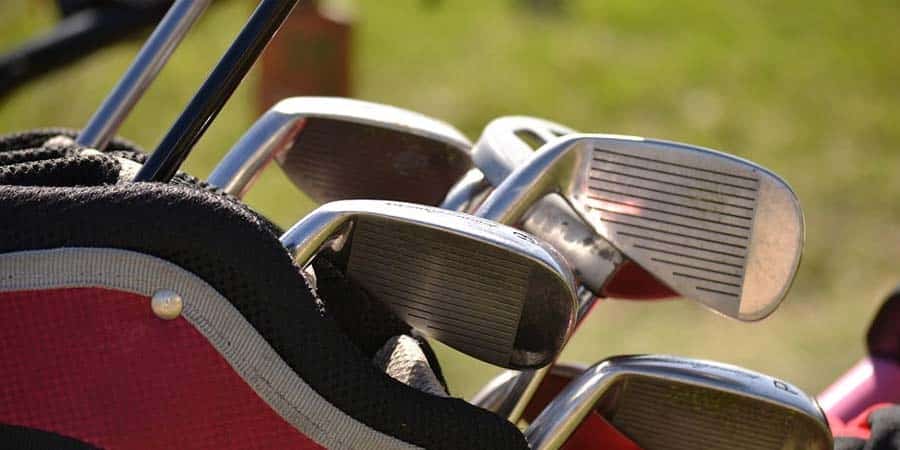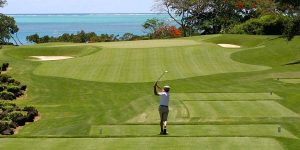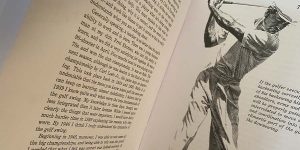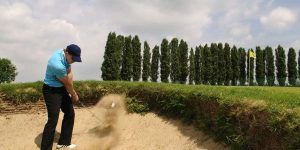To play golf, you’re going to need some equipment. Unfortunately there’s no way round that as you can’t hit the golf ball with your hands!
But the good news is, that equipment doesn’t need to break the bank.
Here’s what you need.
Jump To Section
Golf Clubs
Golf technology has improved massively over the last couple of decades.
Modern clubs for beginners are designed to be easier to hit, more forgiving, and to get the ball up in the air.
There are 5 types of golf club, each with a different purpose. Here’s a quick explanation of each:
Driver — the big stick.
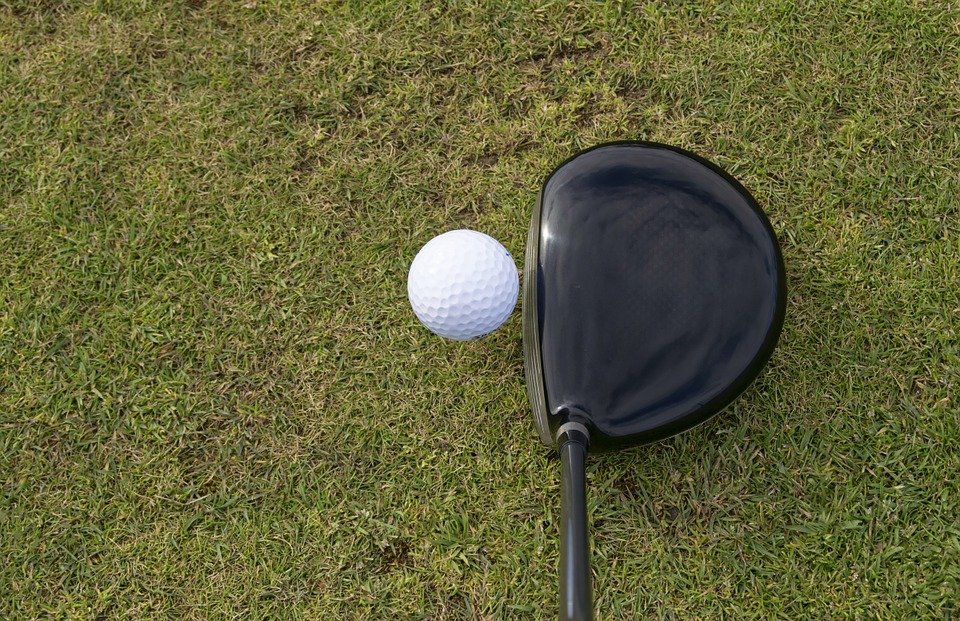
This is the longest club in the bag and designed to create maximum distance on tee shots.
Modern drivers have large heads, which are designed to be more forgiving on off centre hits.
Fairway Woods — 3 wood, 5 wood etc.
 Can be used on the fairway for distance, or from the tee box as an alternative to the driver.
Can be used on the fairway for distance, or from the tee box as an alternative to the driver.
The higher the number of the wood, the more loft in the club, and the shorter the shaft. So a 3 wood has less loft and a longer shaft than a 5 wood.
That sounds a little technical, but all you need to know is:
- Less loft = more distance
- Longer shaft = more distance
Generally (although not always) clubs with more loft are easier to hit.
So while you might get less overall distance with a 5 wood, you might find it easier to hit and therefore a better choice than a 3 wood when starting out.
Irons
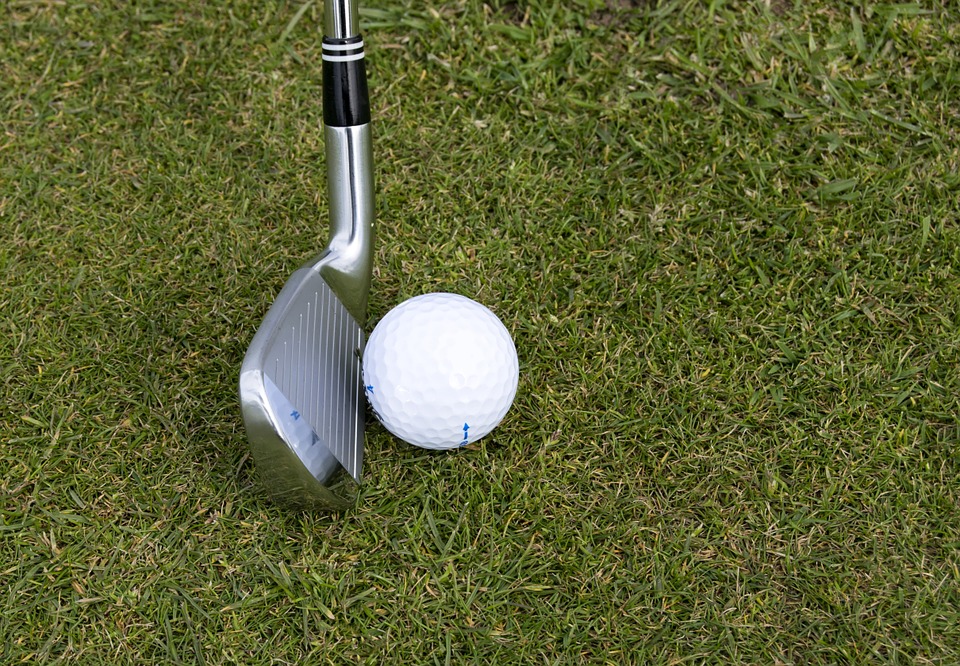
Irons are generally used for approach shots to the green, or from the tee on short holes.
They can also be a good choice from any tee box when starting out as they are easier to control than drivers and woods. A shorter tee shot into the middle of the fairway is better than a longer shot out of bounds!
Irons have varying degrees of loft and shaft length.
The lower number the iron, the less loft in the club. For example, a 4 iron has left loft than a 5 iron, and everything else being equal, will fly the golf ball further.
But…
The lower the loft, the harder an iron is to hit. So when starting out we would not recommend trying to hit anything lower that a 5 iron.
Numbered irons run from 1-9 (with 1 having the least loft, and 9 the most), after which the numbering stops, and they are called ‘wedges’.
Most players will use a pitching wedge, and perhaps a sand wedge, with the sand wedge having more loft (= less distance) than the pitching wedge.
More advanced players might also use a lob wedge, which has a very high degree of loft (60 degrees+).
We do not recommend beginner golfers using lob wedges as they are quite difficult to hit.
Blades v Cavity Backs
Traditionally, irons were forged from one piece and shots hit off centre would be punished. These traditional irons are known as blades.
While more advanced players may prefer the feel of traditional blades, beginners should opt for cavity back clubs.
Also known as ‘game improvement clubs’ cavity backed irons are much easier to hit, and are designed to get the ball into the air.
Hybrids
Hybrid clubs (sometimes called rescue clubs) are like a cross between irons and fairway woods.
They have the larger profile of a wood at address, but the loft of a longer iron.
This means they can be used for multiple purposes.
They are great for long approaches, from the tee, and are also very good at cutting through thick rough. They can even be used for chipping the ball from close range.
Beginner golfers will generally find hybrids easier to hit than long (1-4 irons) and we would recommend carrying at least one hybrid in your bag.
Putters
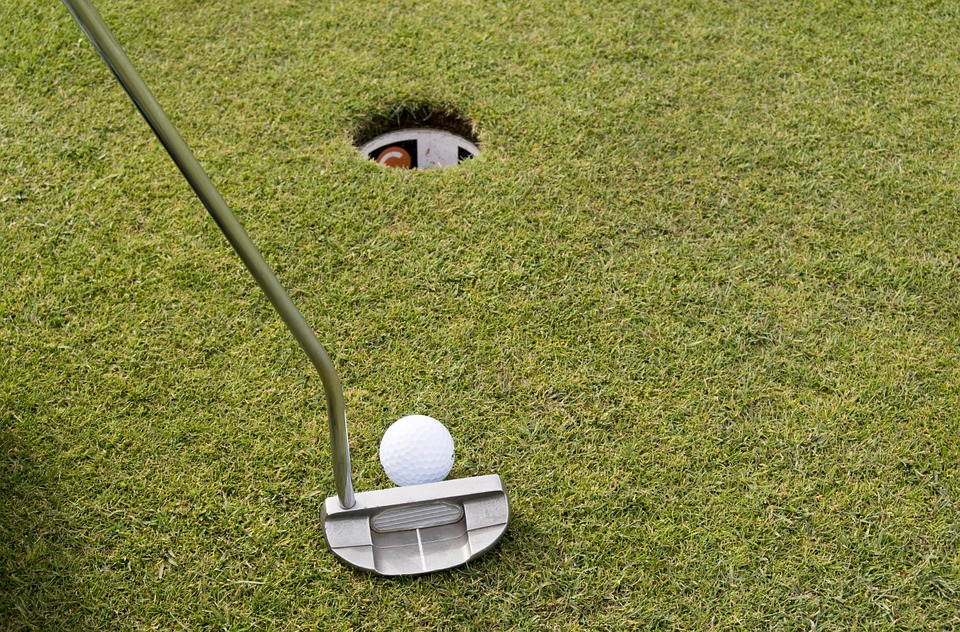
Putters are used on the green (or occasionally from the fringe) to get the ball into the hole!
Best Golf Clubs For Beginners
When starting out, the best option is to go for a full set of beginner clubs.
Normally you will get a driver, a 3 wood, a hybrid, 4-PW (irons), and a putter. Everything you need to start playing golf.
You’ll also get a bag to carry your clubs around in (pretty essential!).
You can check out our recommendation for the best irons in 2020 here.
Another option is to go for a set of second hand clubs.
Just make sure that the irons in the second hand set are cavity backs.
Golf Balls
You can’t play golf without a golf ball.
In term of which golf balls to go for, we would recommend that you don’t worry about brand, or type, and simply buy balls based on price. Because when you are starting out in golf you are going to lose quite a few balls!
You can get a good deal on 50 second hand Callaway balls from Amazon here.
(the other option is to trawl the rough and woods of your local course and go ball hunting. That way they are free!)
Other Golf Accessories
Besides balls and clubs, there a few other things you’ll need in your bag.
Golf Tees
You’ll need some tees for hitting your tee shots (the clue is in the name!).
We recommend going for 2 ¾” wooden tees, which you can push fully into the ground for iron tee shots, or push in just a little bit for hitting the driver.
A pack of 100 tees will cost around $7.
Golf Glove
A glove is not essential for starting out. In fact, I personally didn’t wear a glove during my first few years of playing golf.
But it will definitely help you to grip the club more securely, which is essential to a solid swing.
Golf gloves are pretty cheap, and you can pick up a decent one for under $10.
Golf Shoes
To play good golf you need to feel balanced and firmly connected to the ground while you swing.
Modern golf shoes have soft spikes, which will keep you nice and steady. They are also waterproof, which will keep your feet nice and dry on soggy courses.
You can pick up a good pair for around $50/$60.
Check out our guide to 2019’s best golf shoes here.
A Golf GPS or Watch
Again, this is not an essential. But, as you get better it’s going to become important to know how far you hit the ball with each club, and an accurate distance to the green. So I would recommend investing in a golf GPS or watch.
Here are the best golf GPS watches this year.
Other Bits & Pieces
Here’s a few other things you might need while playing golf:
- An umbrella (for keeping you dry!)
- A pencil (for writing down your scores)
- A ball marker (although a coin will do)
- A pitch repairer (to keep the green keeper happy)
- A patient partner (joking… well kind of!)
Next: How To Play Golf: The Basics
